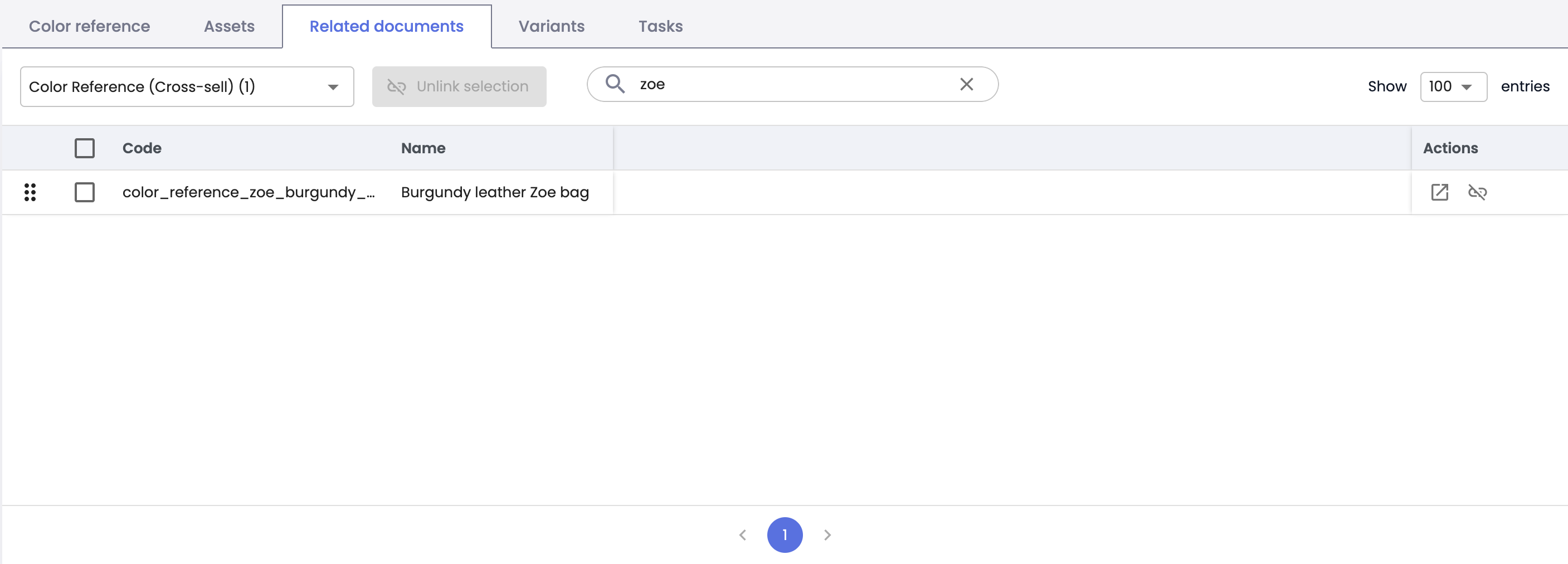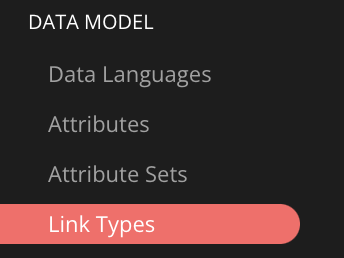Structuring Links Between Product Sheets and Assets
Learning Objectives
- Understand the role of links in data structure.
- Learn how to create, configure, and manage link types.
Overview
Links allow you to structure and organize the relationships between objects in the PIM, particularly between product sheets and assets. By configuring these links, you ensure coherent data organization by associating content with each other.
There are two main types of links you can manage from the “link type” page:
- Document - Document Link: This links product sheets together (e.g., complementary products), or any other type of document to each other.
- Document - Asset Link: This associates a product sheet with one or more assets (e.g., images, videos).
Good to know
- Parent-child link: These define a hierarchical relationship. The parent object is the main element, while the child object is a linked element that depends on the parent.
- In Document - Document links: A product sheet (parent) can be linked to other product sheets (children), such as accessories, materials, or variants.
- In Document - Asset links: The document is always the parent object, while the asset is the child object.
The data structure defined by the links is directly displayed on the product sheet, highlighting the role and hierarchy of the objects:
- From the Assets tab of the product sheet, a visual can be linked to the product sheet to enhance its presentation.

- From the Related Documents tab of the product sheet, a product can be linked to other products to form a cohesive set.

Creating a Link Type
Accessing Link Types
- From the administration menu, under Data Model go to Link Types.

- The page displays the list of existing link types (if none have been created, the page is empty).
- Click on the Create a link type button at the top right to add a new link type.

Identifying the Link Type
Fill in the following information:
- Name: Clear and descriptive title (e.g., "Main Product - Accessory").
- Code: Automatically generated, can only be modified during creation.

Defining the Link Type
Link type: Select Document - Asset or Document - Document.

Document - Document Link
- Select the parent object (e.g., "Main Product").
- Select the child object (e.g., "Main Product" or “Material Reference”).
Document - Asset Link
- Select the parent object (e.g., "Product Sheet" or “Material Reference”).
- The child object is always the asset.
Additional Information
- Define a maximum linked objects (optional): For example, set a limit of 4 to link a maximum of 4 objects (product sheets or asset) for this link.
- Assign a Position to determine the order in which linked objects appear on the product sheet: value 1 positions the link at the top of the list on the product sheet, while value 7 places it in the 7th position in the list.

- Click on Create to save the link type.

Editing or Deleting a Link Type
Editing a Link
- In the list of link types, click on editing.

- Make your changes.
- Click Save to store the link type.
Deleting a Link
You can delete a link in two different ways:
- From the Link Type page, in the list of links, click on the Delete icon.

- Or, from the link type editing page, click on Delete.

❗️ Warning: Deleting a link type permanently deletes all associated links.
Best Practices
- Use descriptive names to make it easier to identify links.
- Check the hierarchy of objects before configuring a link.
- Limit the number of linked objects to avoid information overload.
Limitations
- You can create up to 100 link types maximum.
- If you delete a link type, all links created with this link type are deleted, and the information will be lost without recovery.
In summary
- Links structure the relationships between product sheets and asset.
- Two types of links exist:
- Document - Document (e.g., complementary products)
- Document - Asset (e.g., associated images).
- Link types are configurable through the administration menu, under Data Model > Link Types. Define:
- A descriptive name, a unique code,
- The parent-child link type, defining a hierarchy between objects,
- A maximum number of linked objects and a priority for display.
- Best practices: Use clear names, define object hierarchy well, and limit the number of linked objects for better readability.
Next Chapter
Congratulations! You’ve completed the "Structuring Links" course. Continue your learning by exploring the next module in the Administrator Training.
Updated 3 months ago
